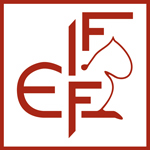Introduction
The Bengal is a domestic cat which originates from the Felis Bengalensis or Asian Leopard Cat, originating in South-East Asia. They have a feral appearance and typical pattern and colours that reminds the Leopard. It is a powerful and very lively breed and quite famous for his big voice.
History
Bengals are hybrids developed in the late 80es in the USA crossing domestic cats with Asian Leopard Cats in order to have a well marked cat with a wild appearance. The selection to obtain Bengals also required the use of other breeds like Abyssinians, Burmese and Egyptian Maus. The breed was recognized by FIFe in 1999.
Appearance
The Bengal must resemble a wild cat. He has a long, sturdy, and muscular body and a smaller head, the pattern is probably the most distinctive trait of the breed. The typical “rosettes” with 3 colours are the most popular, but they can be found also in marble and in the new colour silver. The markings must always be horizontal in flowing which is another typical feature of the Bengal pattern. Other wild colour varieties, like the charcoal with the typical mask and cap, can also be found but they are not yet recognised by FIFe.
Temperament
Bengals are very active, lively cats that need a lot of space and activity. They are friendly and extroverted and love to run and play with any toy. To avoid them to be shy, they need quite a lot of social interaction, especially with their humans. A non-socialized Bengal can be difficult to handle. They are very intelligent and learn many tricks easily. Because of their ancestors, they are great hunters and their physical features, make them excellent runners.
Breed Standard
Last modification of the Standard: 2025
